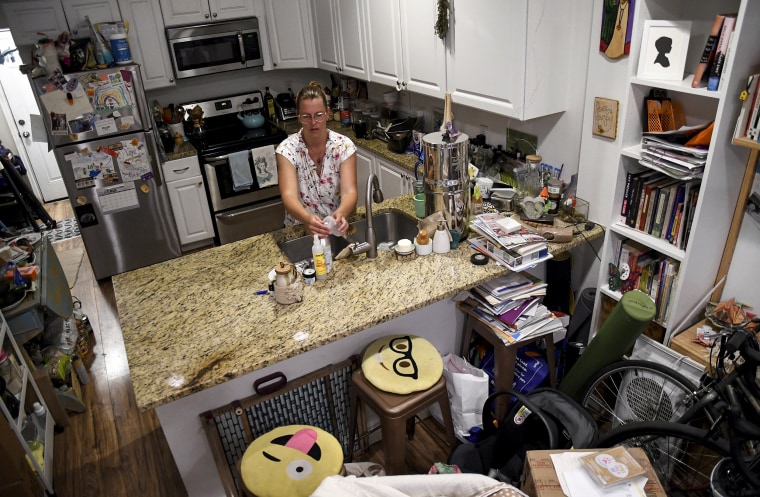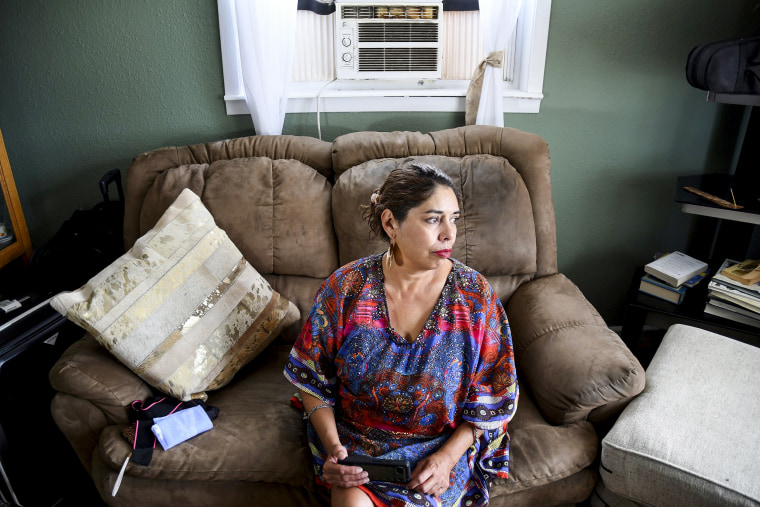While frigid temperatures and high heating bills birthed the term “heat or eat,” she said, “we can now transition to AC or eat, where people are going to have to make difficult decisions.”
As temperatures rise, so does the cost of cooling. And temperatures are already hotter in America’s low-income neighborhoods like Gallegos’ Denver suburb of Globeville, where people live along stretches of asphalt and concrete that hold heat like a cast-iron skillet. Surface temperatures there can be roughly 8 degrees hotter than in Denver’s wealthier neighborhoods, where a sea of vegetation cools the area, according to the environmental advocacy group American Forests.
This disparity plays out nationwide. Researchers at the University of San Diego analyzed 1,056 counties and in over 70%, the poorest areas and those with higher Black, Hispanic and Asian populations were significantly hotter.
About one in 10 U.S. households have no air conditioning, a disparity compounded for marginalized groups, according to a study by the Brookings Institution. Less than 4% of Detroit’s white households don’t have air conditioning; it’s 15% for Black households.
At noon on Friday, Katrice Sullivan sat on the porch of her rented house on Detroit’s westside. It was hot and muggy, but even steamier inside the house. Even if she had air conditioning, Sullivan said she’d choose her moments to run it to keep her electricity bill down.
The 37-year-old factory worker pours water on her head, freezes towels to put around her neck, and sits in her car with the air conditioner on. “Some people here spend every dollar for food, so air conditioning is something they can’t afford,” she said.
Shannon Lewis, 38, lived in her Detroit home for nearly 20 years without air conditioning. Lewis’s bedroom was the only place with a window unit, so she’d squeeze her teenager, 8-year-old and 3-year-old-twins into her queen-size bed to sleep, eat meals and watch television.

“So it was like cool in one room and a heat stroke in another,” Lewis said. For the first time, Lewis now has air conditioning through a local non-profit, she said. “We don’t have to sleep or eat in the same room, we are able to come out, sit at the dining room table, eat like a family.”
After at least 54 died during a 2021 heat wave, mostly elderly people without air conditioning, in the Portland area, Oregon passed a law prohibiting landlords from placing blanket bans on air conditioning units. By and large, however, states don’t have laws requiring landlords to provide cooling.
In the federal Inflation Reduction Act, billions were set aside for tax credits and rebates to help families install energy-efficient cooling systems, but some of those are yet to be available. For people like Gallegos, who doesn’t pay taxes, the available credits are worthless.
The law also offers rebates, the kind of state and federal point-of-sale discounts that Amanda Morian has looked into for her 640-square-foot home.
Morian, who has a 13-week-old baby susceptible to hot weather, is desperate to keep her house in Denver’s Globeville suburb cool. She bought thermal curtains, ceiling fans and runs a window unit. At night she tries to do skin-to-skin touch to regulate the baby’s body temperature. When the back door opens in the afternoon, she said, the indoor temperature jumps a degree.

“All of those are just to take the edge off, it’s not enough to actually make it cool. It’s enough to keep us from dying,” she said.
She got estimates from four different companies for installing a cooling system, but every project was between $20,000 and $25,000, she said. Even with subsidies she can’t afford it.
“I’m finding that you have to afford the project in the first place and then it’s like having a bonus coupon to take $5,000 off of the sticker price,” she said.
Lucy Molina, a single mom in Commerce City, one of Denver’s poorest areas, said her home has reached 107 degrees without air conditioning. Nearby, Molina’s two teenage children slurped popsicles to cool off, lingering in front of the open freezer.
For Molina, who bustled around her kitchen on a recent day when temperatures reached 99 degrees outdoors, it’s hard to see any path to a cooling respite.
“We’re just too poor,” she said.
اكتشاف المزيد من ينبوع المعرفة
اشترك للحصول على أحدث التدوينات المرسلة إلى بريدك الإلكتروني.
